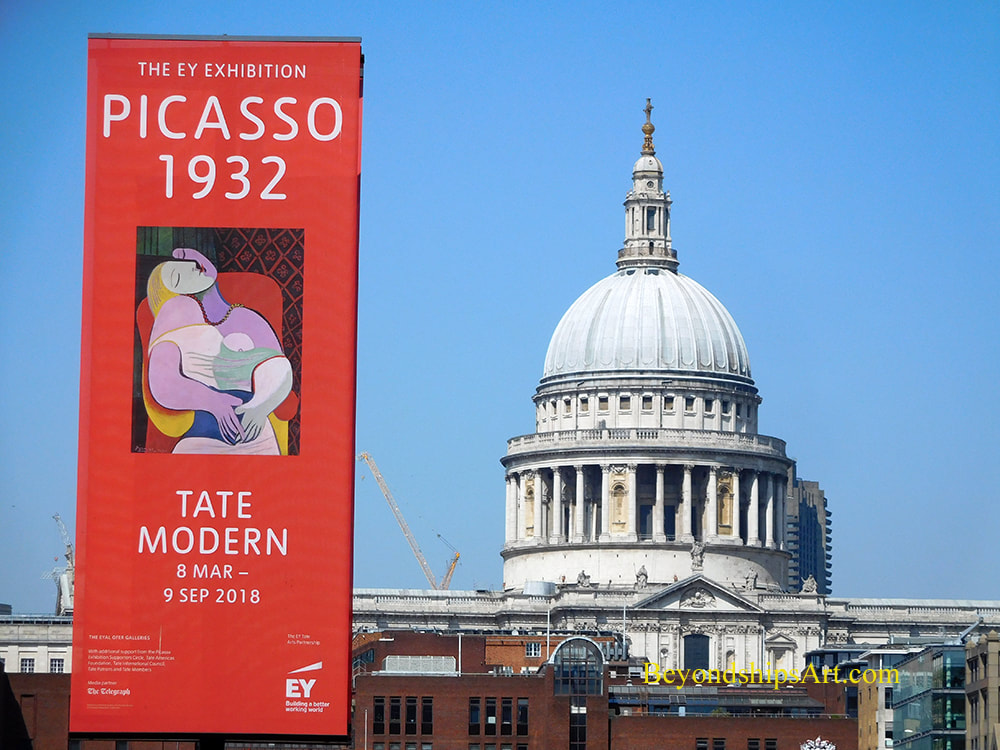"Picasso 1932" “Picasso 1932” at the Tate Modern looks at one year in the career of Pablo Picasso. It is not just a year selected at random but rather 1932, a time that has been called Picasso's “year of wonders.” The Tate presents this story using more than 100 paintings, sculptures and works on paper not only from the Tate's own collection but from other major museums and private collections.
The exhibition is a worthwhile experience even leaving aside its central thesis. Included in the exhibition are major works such as “Girl Before A Mirror,” “Le Reve” and “Nude in a Black Armchair.” The flowing sensual lines, the use of color and shapes are Picasso at his best. There is also variety for in addition to the paintings, there are black and white drawings and sculpture. Also included are a number of traditional representational paintings that were included in a Picasso retrospective exhibit in 1932, the work of a very good traditional draftsman. Thus, you do not have to know anything about Picasso to enjoy this exhibition. However, the story presented by the Tate is rather fascinating. In 1932, Picasso was already an internationally acclaimed artist. He was no longer living in poverty but rather in an apartment in a fashionable part of Paris. He also had a mansion in the French countryside where he had a second studio. He was married to the Russian ballerina Olga Khokhlova. In short, he was living the life of a celebrity. Still, he had turned 50 in 1931 and he began to worry that people were regarding him as something of a has been. He saw himself as in competition with the surrealists and with Henri Matisse. As a result, Picasso felt driven to create in order to show that he was still a vital force in art. This need was made all the more urgent as he had to prepare for his first major retrospective in June 1932. At the same time, Picasso had become involved in a love affair with Marie-Therese Walter. Her image appears in many of Picasso's works during this period. Fascinatingly, his representations of her flowed from his imagination as he rarely worked using live models. Thus, what we see of her has been filtered through his thoughts and emotions. Towards the end of the year, Picasso's works grew darker. Marie-Therese had become very ill after swimming in the polluted rover Marne. Also, Picasso was becoming increasinly concerned about the lingering Great Depression and the rise of Facism in Germany, Italy and his native Spain. In this exhibition, viewers can see the effect of these forces on Picasso's works..A painting or other work of art speaks for itself. Its message is self-contained. Furthermore, whatever message the viewer receives from a work is just as valid as the message the artist was trying to convey when he or she created the work. Yet, knowing something of the story behind a work can provide additional insights and thus create a richer experience when viewing the art. |
|
Art review - Tate Modern - "Picasso 1932"
